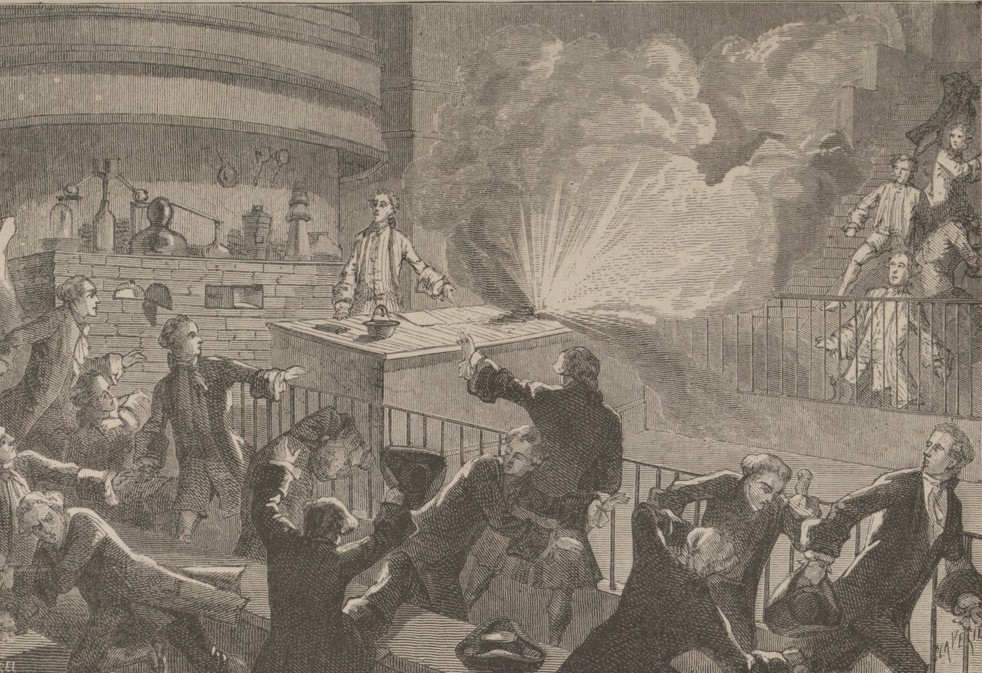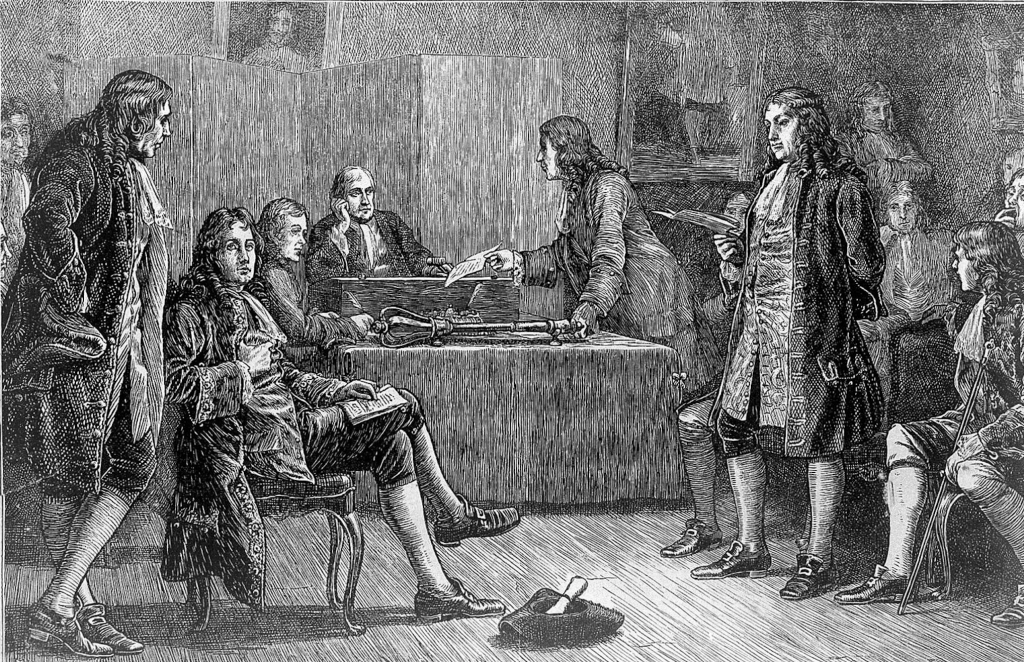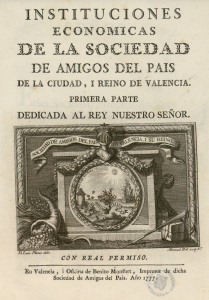—Spaces, figures and strategies at the service of the promotion and social approval of the sciences.—
Situating Chemistry is an online collaborative project whose main objective is to locate the spaces where chemistry has been carried out throughout history. It allows the specific places where archival sources, journals or scientific publications documenting the existence of a chemical laboratory to be visualised. The information available is very uneven, depending on the state of the research on scientific activity at different times and places. There are examples such as Paris and some other French cities for which there is already a lot of information and others for which there is still little available data. If we look at the metropolitan area of Paris at the end of the eighteenth century, we will see that the database includes the presence of about five hundred active laboratories in a city of just under a quarter of a million inhabitants. Many of them are linked to pharmacies, academic institutions, the state administration or industries and manufactures. But the most surprising thing is that about three hundred were installed in private residences, within the ‘domestic’ category.

Recreation of the chemistry courses given by Gillaume François Rouelle in the mid-18th century at the Jardin du Roi in Paris. Bibliothèque National de France.
Who were all those people who decided to install a chemistry lab in their private residences? Why and for what purpose did they decide to occupy their family space, their time and their resources with the installation and use of a chemical laboratory? We will not be able to answer these questions without understanding the process that, throughout the eighteenth century, brought out the experimental sciences of the cabinets, libraries and learned laboratories where they had been practised, sheltered from the suspicious gaze of the European intellectual, religious and political elites, and to the absolute indifference other mortals. In this century, science moved into public space and created new settings to develop this public side. Next, we will visit some of the places that contributed to obtaining recognition and value for the experimental sciences, turning them into the driving force and measure of the moral and economic progress of the nations, driven by the enlightened movements.
With mixed success, depending on the area, drinking coffee, tea or chocolate gained enormous prestige among the European aristocratic elite of the late seventeenth century and among those who competed for such status. For the collective consumption of these beverages, ‘houses of leisure and conversation’, as Gaspar Melchor de Jovellanos (1744-1811) called them, were opened in European cities where the exotic concoctions accompanied the debates on the latest politics, literature and, also, of what was then known as natural philosophy and would later be called ‘science’ or ‘the sciences’. News about the natural and artificial world that reached the hands of these idle talkers through the flourishing newspapers published in European capitals or in the abundant correspondence exchanged between those who could contribute and were interested in new observations and experiments on the optical, electrical, magnetic or pneumatic phenomena produced by the new philosophical instruments. Some gentlemen’s clubs and social gatherings became real hubs in those correspondence networks, receiving and forwarding the letters that could be of utmost interest to their members and correspondents. Key institutions for the science of the eighteenth century emerged from some of them, such as scientific societies and academies, as well as fundamental objects for communication such as academic reports, the beginning of future specialised scientific journals that emerged at the end of the century.

Meeting of the Royal Society chaired by Isaac Newton. Wikimedia.
Belonging to these clubs became a sign of prestige, so their access was very restricted. For a long time, they were aristocratic strongholds, but they served to make this powerful and wealthy elite interested in what natural philosophers and the growing and diverse community of observers and experimenters had to say about a natural world that, they assured, could not only offer observations and interpretations, but also ways to dominate and transform it. Attracting the interest of these elite was undoubtedly important, but natural philosophers did not only live by interest, funding for their scientific enterprises was also needed, and the first forms of public and private sponsorship for scientific activity emerged from these meetings, paying for expeditions and research that they considered important for the prestige and economic progress of their respective nations. It was in these places where one of the key slogans for the promotion of experimental sciences was coined, which states that ‘knowledge is power’. Similar to the first forms of scientific associations, the scientific academies and societies of the eighteenth century were essential for spreading public science and in providing access to it for sectors of the population traditionally excluded from intellectual activity.

The British experimenter Francis Hauksbee (1660-1713) shows his guests the surprising effects produced by electrical fluid. Wikimedia.
Electricity was probably the most successful phenomenon in the eighteenth century, among other reasons, because of the spectacular nature of its experiments. The electrical flux produced by rotating large glass discs in contact with silk bearings made young people suspended from the ceiling able to attract metal filings with their hands, and ladies and gentlemen made sparks pop as they brought their hands together or felt the tingling movement of the mysterious flux through their bodies. The spectacle of the phenomena produced by vacuum pumps, electric machines or chemical retorts, ovens and stills attracted the interest of instrument makers, book publishers and speakers of all kinds and conditions, who saw a lucrative market opening up before them. The commercial interest of some and the need for social recognition of others found an interesting symbiosis in electrical sparks and chemical reactions. High society salons were one of the settings where these experiments were shown. Aristocrats, travellers and diplomats, merchants and industrialists and prestigious professors and experimenters were summoned to these social spaces, where they found an excellent setting in which to make their knowledge known and gain for themselves the attention and recognition necessary for their growing professional careers.
Usefulness was another fundamental pillar for the promotion of the sciences and those who practised them. Experimenters tried to convince their fellow citizens that their instruments were not only able to explain the world but also dominate and transform it. Public courses in physics, chemistry and natural history proliferated in European cities. On the terraces of the amphitheatres prepared or built for this purpose, medicine and pharmacy students, merchants and industrialists, travellers and spies, diplomats and aristocrats, liberal professionals and literati congregated, interested in finding out what the experimenters had to say. The work of these professors, speakers and demonstrators was not easy, as they had to attract the attention of audiences with very varied interests. Their explanations, demonstrated by experiments carried out by skilled assistants, had to make learning easier for the students who depended on them to acquire the necessary knowledge for their professional advancement; raise scientific and philosophical debates to the delight of those who came in search of intellectual entertainment; and also give evidence that convinced industrialists and producers of the practical applications of what was presented and shown there. Many of these courses were organised by patriotic or economic societies, led by enlightened aristocrats and wealthy landowners who financed study tours, courses for farmers and workers, as well as research projects that fostered the improvement of local agriculture and industry. They were one of the places in which the idea of the application of science to the economic progress of nations took shape and penetrated enlightened societies.

Title page of the Instituciones económicas de la Sociedad de Amigos del País de la ciudad y reino de Valencia, Primera parte. Valencia, Oficina de Benito Monfort, 1777). Biblioteca Valenciana.
This setting for the social promotion of the sciences, for growing philosophical, economic and professional interest in what natural philosophers said they could explain and do with their observations, experiments and artefacts, allows us to understand the existence of such a large number of laboratories installed in private homes. Experimental demonstrations in amphitheatres and public settings were not only followed and observed by an interested audience. Attendees of these sessions also tried to reproduce the experiments themselves, considering this the best way to understand the phenomena shown and at the same time making them participants in the production and circulation of knowledge at philosophical meetings, where they could explain particularities of their research in detail. It was also customary to describe experiments in letters and articles for new periodicals.
These private laboratories were also spaces of ostentation and socialising, becoming places of the ‘coming together of many different participants who, free from the common concerns, see chemistry as useful’, as the Madrid pharmacist Pedro Gutiérrez Bueno, surprised by the high attendance of these people in his chemistry courses, said of those audiences. They were also places of study for those preparing for examinations and practical exams required to obtain their qualifications as doctors, pharmacists, surgeons or engineers at academic institutions still lacking the space and resources necessary to acquire the knowledge they required from their future graduates. By invitation or paying, generations of future natural philosophers and soon professional scientists circulated and practised the experimental sciences in these private laboratories.
Antonio García Belmar
IILP-UA
How to cite this paper:
García Belmar, Antonio. Science in the public sphere. Sabers en acció, 2020-12-23. https://sabersenaccio.iec.cat/en/science-in-the-public-sphere/.
Find out more
You can find further information with the bibliography and available resources.
Recommended reading
Bertomeu Sánchez, José R.; García Belmar, Antonio. La Revolución Química: Entre la historia y la memoria. Valencia: PUV; 2006.
Fara, Patricia. An Entertainment for Angels. Electricity in the Enlightenment. Cambridge: Icon Books; 2002.
Golinski, Jan, Science as Public Culture: Chemistry and Enlightenment in Britain, 1760–1820. Cambridge: Cambridge UniversityPress, 1992.
Nieto-Galan, Agustí. Los públicos de la ciencia. Expertos y profanos a través de la historia, Madrid: Marcial Pons, 2011.
Terrall, Mary, Public science in the enlightenment, Modern Intellectual History, 2005, 2(02), 265-276.
Studies
Broman, Thomas. “The Habermasian Public Sphere and ‘Science “in” the Enlightenment.’” History of Science. 1998; 36: 123–49.
Clark, W., et al. The Sciences in Enlightened Europe. Chicago: University Press; 1999.
Fara, Patricia. An Entertainment for Angels. Electricity in the Enlightenment. Cambridge: Icon Books; 2002.
Fara, Patricia. Pandora’s Breeches: Women, Science and Power in the Enlightenment. London: Pimlico; 2004.
Frize, Monique. Laura Bassi and Science in 18th Century Europe: The Extraordinary Life and Role of Italy’s Pioneering Female Professor. Berlin; New York: Springer; 2013
García-Belmar, Antonio, and Perkins, John, eds. “Sites of Chemistry in the Nineteenth Century”. Ambix. 2014; 61(2): 109-93.
Habermas, Jürgen. Historia y crítica de la opinión pública. Barcelona: Gustavo Gili; 1994
Raintree, John, ed. “Chemistry Courses and the Construction of Chemistry, 1750-1830”. Ambix. 2010; 57 (1): 1-103.
Porter, Roy, and George Sebastian Rousseau, eds. The Ferment of Knowledge: Studies in the Historiography of Eighteenth-Century Science. Cambridge [etc.]: Cambridge University Press; 1980.
Raj, Kapil. Relocating Modern Science. Circulation and the Construction of Knowledge in South Asia and Europe, 1650-1900. New York: Palgrave; 2007.
Schaffer, Simon. et al. The Brokered World. Go-Betweens and Global Intelligence, 1770-1820. ScienceHistoryPublications; 2010.
Schaffer, Simon. Trabajos de Cristal: Ensayos de Historia de La Ciencia, 1650-1900. Madrid: Fundación Jorge Juan: Marcial Pons Historia; 2011.
Sutton, George. Science for a Polite Society. Gender, Culture and the Demonstration of Enlightenment. Boulder: Westview Press; 1995.
Thébaud-Sorger, Marie. L’Aérostation Au Temps Des Lumières. Rennes: PUR; 2009.
Sources
Academic memoirs of the Real Sociedad de Medicina, y demásciencias de Sevilla: excerpt of the works and observations, presented in 1765. Volume I. Seville, Printedby Francisco Sánchez, 1766. Available here.



